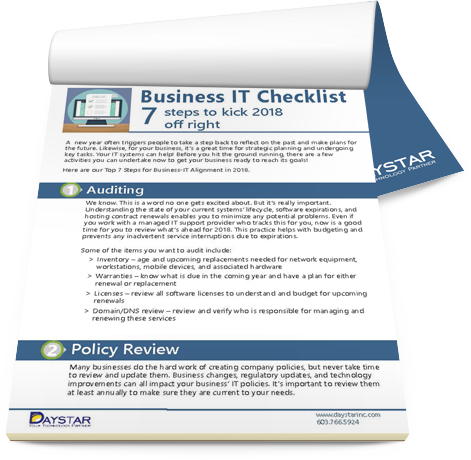February 11, 2025, marks Safer Internet Day for this year. This occasion serves as a reminder of why we all need to be mindful of what we add to the digital world. Business owners play a critical role in what the internet looks like and how it may affect the people who use it.
“As an uncensored public space, the internet will always come with a certain amount of risk. However, it’s important for businesses to be aware of the effect their own content may have on potential viewers.” - Keith Bamford, CEO of Daystar.
For example, misleading advertisements or unclear marketing can blur the lines between legitimate and fraudulent offers. Your offer may not be a scam, but using advertising tactics that normalize scam tactics may contribute to people’s inability to recognize a real scam.
Of course, public media literacy will always be the best way to make people safer online. The challenge is that many younger people have not yet had the experience to gain these essential skills. That’s one of the many reasons why Safer Internet Day encourages mindful contributions to internet content.
This article will explore the importance of this day and how your business can help make the internet safer.
What is Safer Internet Day?
Safer Internet Day (SID) is an annual event aimed at promoting the safer and more responsible use of online technology. The goal is to educate people on how they can help make the internet safer for kids and teens.
Most initiatives surrounding Safer Internet Day focus on these objectives.
- Educating people about online safety challenges, such as cyberbullying, privacy concerns, and online scams
- Equipping users with tools and knowledge to make informed decisions online
- Encouraging respect, kindness, and responsible digital citizenship
Dealing With Strict Data Protection Requirements?
Our team can help you navigate NIST, HIPAA, and PCI regulations.
Why is Safer Internet Day Important?
The average teenager spends 43% of their waking hours on the internet, which is 3% higher than the global average for all ages. This number accounts for the time they spend online both for school and for leisure time. The more time spent in the online world, the more potential risks.
While cyberbullying, online scams, and predatory behavior are all still real concerns, none of these 3 are the leading concern for parents regarding their children’s time online. With the rise of generative AI, false or misleading information is now the top concern for parents.
One survey of 800 parents of children aged 8-16 found that 65% were more concerned about online misinformation than schoolyard bullying prior to sending their children back-to-school in September 2024. That same survey found that 23% of these parents were deeply concerned about the influence that online content may have on their children.

Source: Learner
Although Safer Internet Day is primarily concerned with the well-being of young people online, internet safety concerns are growing for adults too. Consumers reported losing over $10 billion to fraud in 2023, marking a 14% increase from 2022.
Safer Internet Day marks an occasion for public education about how people of all ages can stay safe online.
How Can Business Owners Help Create a Safer Internet
As a business owner, you have a lot of power in your hands. Much of the content that is produced online is produced by businesses or advertisers. That means you are partially responsible for what the internet looks like.
Here are some actions that you can take to ensure your contributions to the internet are responsible.
1. Publish Transparent Privacy Policies
Explain to your audience what information you collect, how it is used, and who it is shared with. Use plain language and make your privacy policies easily accessible on your website. Update these policies regularly to reflect changes in your practices or legal requirements.
This step builds trust with your customers and demonstrates your commitment to ethical data collection practices. Transparent privacy policies also reduce the risk of legal complications for your business.
2. Promote Digital Literacy Among Your Employees
Offer training programs to educate your employees about online safety, secure communication practices, and recognizing potential cyber threats. Provide resources that empower them to make informed decisions in their online interactions.
A well-informed workforce minimizes the chances of security vulnerabilities stemming from human error. Fewer vulnerabilities mean less risk of data leaks and less risk of cyber vandalism damaging your online content.
Here are some examples of what to include in these programs.
|
Training Component |
Description |
Goal |
|
Understanding Online Threats |
Educate employees about common threats like phishing, malware, and ransomware. |
Improve threat awareness and identification skills. |
|
Recognizing Phishing Attempts |
Show how to identify phishing emails, suspicious links, and fraudulent requests. |
Minimize chances of falling for social engineering. |
|
Secure Communication Practices |
Teach the use of secure platforms, encryption tools, and avoiding unsecured channels. |
Ensure safe sharing of sensitive information. |
|
Password Management |
Provide guidelines for creating strong passwords and using password management tools. |
Reduce the risk of unauthorized access. |
|
Incident Reporting Procedures |
Clarify how to report suspected security issues or breaches. |
Enable quick response to mitigate potential damage. |
3. Moderate Your Online Content
Review and fact-check the content you produce, share, or allow on your platforms. Implement tools and/or assign human employees to identify and flag false information to prevent its spread. Setting an example of what trustworthy content looks like may help readers recognize when other sources are not trustworthy.
Taking responsibility for combating misinformation will help protect susceptible readers from misleading content. This builds a safer online space and strengthens your reputation.
4. Implement Strong Data Security Measures
Adopt advanced cybersecurity practices to protect your digital assets and customer information. Use multi-factor authentication, encrypted communications, and regular vulnerability assessments to identify and address risks.
This practice protects sensitive data from unauthorized access. Strong security measures also reassure customers that their data is safe in your hands.
|
Learn More About How You Can Protect The Data Your Business Stores |
5. Limit Targeted Advertising Toward Minors
Restrict personalized advertising for users under a certain age. If your business directly sells products for children or teens, consider saving your personalized advertising tactics for their adult family members instead.
Firstly, the Children’s Online Privacy Protection Act (COPPA) restricts the collection of personal data (including personalized online experiences) from children under 13 without parental consent. Secondly, children and adolescents are more vulnerable to persuasive messages than adults simply due to their developmental stage. As a result, hyper-targeted messages can have unintended side effects on their mental health and behavior.
6. Put Thought Into Your Business’s AI Usage
AI tools proliferate the business landscape. At this point, it would be unrealistic to expect a business to forgo AI usage altogether. However, every business must put thought into how they decide to use it.
If you do choose to publish AI-generated content, moderate it carefully. Do not publish AI content without first having a human scan it for misinformation or potentially harmful content.
Depending on the nature of your content and where your business operates, you may need to label it as being produced with the help of AI. For instance, any AI-generated content that could be accessed in the EU will be subject to certain labeling obligations starting May 2026.
|
Maintain Your Data’s Safety With Our Leading IT Experts |
|
Navigate The Digital World More Safely With Expert Guidance
Your business can help make the internet safer for all. However, making the internet safer starts by making your internal IT systems safer. Network breaches can lead to data theft and cyber vandalism, both of which can impede your safer internet efforts.
Daystar can help you create a written information security policy (WISP) and use it to train your employees on cybersecurity best practices. We can also help you set strict standards on who has access to which information to prevent potential manipulation or leaks.
Reach out to us today to start protecting your data.












